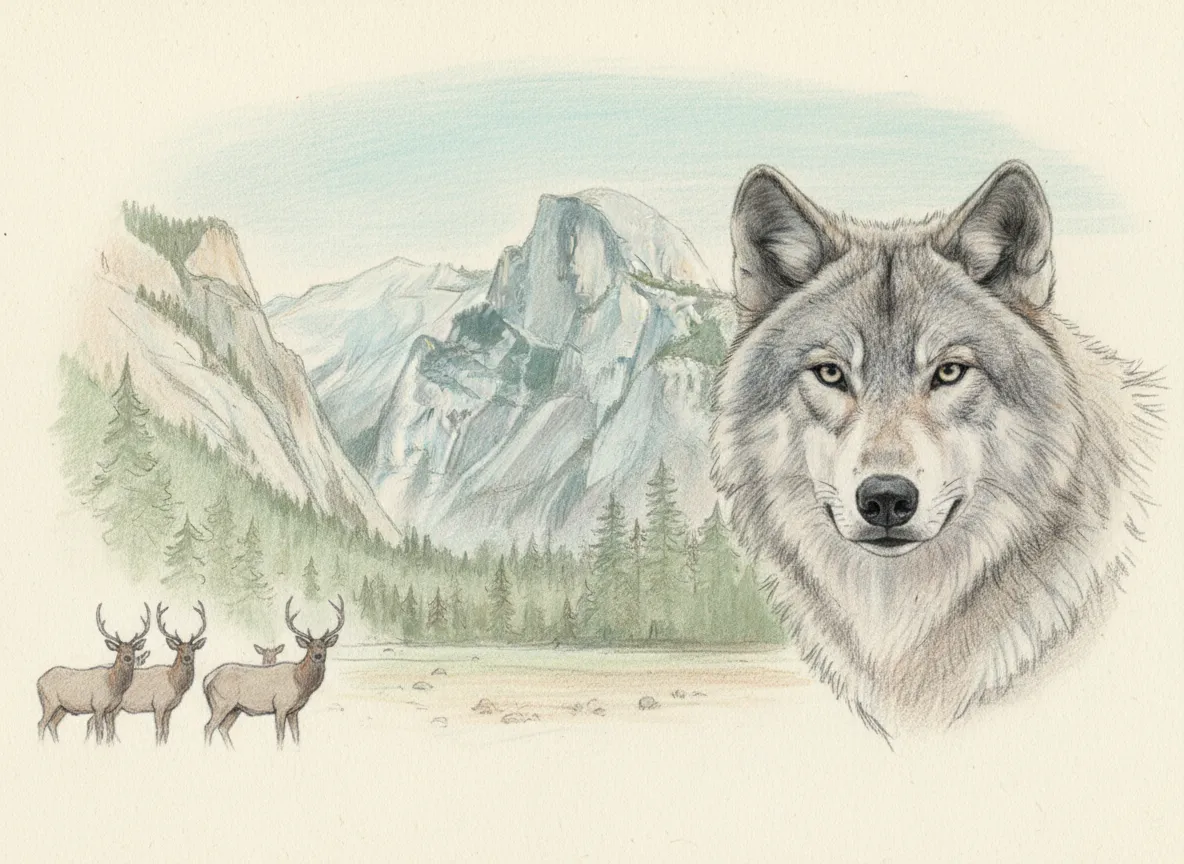Wolves of Yellowstone — Reading Comprehension
Grades
- 5
- 6
- 7
- 8
Standards
- MS-LS2-4
- RI.6.3
- RI.7.3
- RI.8.8
PRINT+DIGITAL RESOURCE
This learning resource is available in interactive and printable formats. The interactive worksheet can be played online and assigned to students. The Printable PDF version can be downloaded and printed for completion by hand.
About This Reader
This passage explores the ecological concept of trophic cascades through the landmark case study of wolf reintroduction to Yellowstone National Park, supporting NGSS standard MS-LS2-4 on ecosystem dynamics. Students discover how the return of an apex predator in 1995 triggered widespread changes throughout the ecosystem. The content explains how wolves affected elk numbers and behavior, which allowed vegetation regrowth along riverbanks, which in turn supported beaver populations, created wetland habitats, and ultimately changed river morphology. By tracing these multi-level impacts—from predators to herbivores to plants to physical environments—students gain a concrete understanding of how disruptions at one level of a food web can cascade through an entire ecosystem. The passage emphasizes that ecosystem components are interconnected in complex ways, with both direct and indirect effects. This real-world example demonstrates how restoring a single species can help rebalance an ecosystem, illustrating both the fragility and resilience of natural systems. The accompanying multiple-choice questions challenge students to trace cause-effect relationships through multiple trophic levels and understand the concept of keystone species in maintaining ecosystem stability.
Perfect For:
👩🏫 Teachers
- • Reading comprehension practice
- • Auto-graded assessments
- • Literacy skill development
👨👩👧👦 Parents
- • Reading practice at home
- • Comprehension improvement
- • Educational reading time
🏠 Homeschoolers
- • Reading curriculum support
- • Independent reading practice
- • Progress monitoring
Reading Features:
📖
Reading Passage
Engaging fiction or nonfiction text
❓
Comprehension Quiz
Auto-graded questions
📊
Instant Feedback
Immediate results and scoring
📄
Printable Version
Download for offline reading
🔊
Read Aloud
Voice-over with word highlighting























